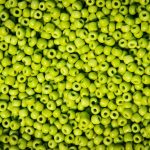So, you want to know about the material properties of nylon 6/6? Well, get ready for a detailed dive into its mechanical strength, chemical resistance, thermal properties, electrical characteristics, and dimensional stability.
Nylon 6/6 boasts impressive mechanical strength, with high tensile and flexural strength making it perfect for a wide range of applications.
Its chemical resistance allows it to withstand various solvents and oils, while its thermal properties make it suitable for high-temperature environments.
Additionally, nylon 6/6 exhibits excellent electrical characteristics and dimensional stability, making it a versatile choice for many industrial and engineering needs.
This introduction will guide you through the precise and objective exploration of nylon 6/6's material properties.
Key Takeaways
- Nylon 6/6 exhibits high tensile strength and impressive flexural strength, making it able to withstand stretching forces without breaking and withstand bending forces without significant deformation.
- It has impressive chemical resistance, being able to withstand exposure to various industrial chemicals, oils, and fuels, as well as harsh environmental conditions and prolonged heat and UV radiation without significant degradation.
- Nylon 6/6 has excellent thermal properties, including good heat resistance at elevated temperatures, low thermal conductivity advantageous for heat insulation, and good thermal stability over a wide temperature range.
- It possesses excellent electrical characteristics, such as excellent dielectric strength, low conductivity, and low moisture absorption, making it suitable for insulating components in electrical equipment and maintaining electrical properties over time.
Mechanical Strength
When you need to understand the mechanical strength of nylon 6/6, it's important to consider its tensile strength and impact resistance.
Nylon 6/6 boasts impressive tensile strength, making it a highly durable material for various applications. The tensile strength of nylon 6/6 typically ranges from 55 to 75 MPa, showcasing its ability to withstand stretching forces without breaking.
Additionally, its impact strength is noteworthy, with the capacity to absorb energy without fracturing. This makes nylon 6/6 suitable for applications where impact resistance is crucial.
Furthermore, the flexural modulus of nylon 6/6 is significant, indicating its stiffness and resistance to deformation when subjected to bending forces. Its fatigue resistance is also commendable, as it can endure cyclic loading without experiencing structural failure.
Moreover, when analyzing its creep behavior, nylon 6/6 exhibits minimal deformation under constant stress over time, highlighting its stability in long-term applications.
Chemical Resistance
Nylon 6/6 demonstrates notable chemical resistance, making it suitable for applications where exposure to various chemicals is a concern. This material exhibits impressive solvent resistance, making it capable of withstanding exposure to a wide range of industrial chemicals, oils, and fuels. Additionally, nylon 6/6 displays exceptional weathering resistance, maintaining its structural integrity and performance when exposed to harsh environmental conditions. Its aging resistance further enhances its suitability for long-term use in diverse applications, as it can withstand prolonged exposure to heat and UV radiation without significant degradation in its properties.
Moreover, nylon 6/6's low moisture absorption is a key factor in its chemical resistance. This characteristic prevents the material from undergoing significant dimensional changes when exposed to moisture, ensuring its stability and performance in various environments.
Thermal Properties
You can observe the thermal properties of nylon 6/6 by subjecting it to various temperature conditions and analyzing its response. Nylon 6/6 exhibits several important thermal properties:
- Thermal expansion: When nylon 6/6 is subjected to temperature changes, it undergoes thermal expansion, meaning it expands as it absorbs heat and contracts as it cools. This property is crucial in applications where dimensional stability is important.
- Heat resistance: Nylon 6/6 demonstrates excellent heat resistance, allowing it to maintain its mechanical properties at elevated temperatures without significant degradation. This makes it suitable for use in environments where high temperatures are present.
- Melting point: Nylon 6/6 has a relatively high melting point, typically around 256°C to 265°C (493°F to 509°F). This high melting point contributes to its ability to withstand heat and maintain its structural integrity in demanding conditions.
- Thermal conductivity: Nylon 6/6 has relatively low thermal conductivity, meaning it doesn't readily conduct heat. This property can be advantageous in applications where heat insulation is desired.
- Thermal stability: Nylon 6/6 exhibits good thermal stability, maintaining its properties over a wide temperature range, making it suitable for diverse thermal environments.
Electrical Characteristics
After examining its thermal properties, it's important to delve into the electrical characteristics of nylon 6/6. Nylon 6/6 possesses excellent dielectric strength, making it an ideal material for electrical applications. Dielectric strength refers to the maximum electric field that a material can withstand without breaking down and conducting electricity. Nylon 6/6's high dielectric strength makes it suitable for insulating components in electrical equipment, such as connectors, switches, and circuit breakers.
In terms of conductivity properties, nylon 6/6 exhibits low conductivity, which means it's a good insulator. This makes it useful for applications where electrical insulation is critical, such as in wire and cable coatings, electrical connectors, and insulating components in electronic devices. Additionally, its low moisture absorption helps maintain its electrical properties over time, as moisture can affect the electrical characteristics of materials.
Understanding the electrical characteristics of nylon 6/6 is crucial for engineers and designers working on electrical and electronic applications. Its combination of high dielectric strength and low conductivity properties makes it a versatile material for various electrical insulation and component applications.
Dimensional Stability
Achieve dimensional stability in nylon 6/6 by carefully controlling processing parameters and minimizing internal stresses. This ensures that the material maintains its shape and size over time, making it a reliable choice for various applications.
- Moisture Absorption: Nylon 6/6 has a relatively low moisture absorption rate, which helps in maintaining its dimensional stability even in high humidity environments.
- Thermal Expansion: Understanding the thermal expansion coefficient of nylon 6/6 is crucial for achieving dimensional stability across a wide range of temperatures.
- Minimizing Internal Stresses: Proper annealing and stress-relieving processes are essential to reduce internal stresses, thus preventing dimensional changes in the material.
- Long-Term Stability: By considering the long-term behavior of nylon 6/6, you can anticipate any potential dimensional changes that may occur over time.
- Design Considerations: Incorporating features like ribs, gussets, and other structural elements can enhance the dimensional stability of nylon 6/6 components, especially in dynamic applications.
Understanding these factors and implementing appropriate measures is imperative for ensuring the dimensional stability of nylon 6/6 in various engineering and manufacturing contexts.
Frequently Asked Questions
Can Nylon 6/6 Be Used in Food Contact Applications?
Yes, nylon 6/6 can be used in food contact applications. It is known for its food safety and regulatory compliance, making it suitable for use in various food-related products due to its strong material properties.
What Are the Typical Processing Conditions for Molding Nylon 6/6?
When molding nylon 6/6, it's crucial to control temperature and moisture content. Optimal parameters for injection molding typically involve temperatures around 250-280°C, and moisture content below 0.2%. Maintaining these conditions ensures high-quality production.
Are There Any Environmental Considerations for Disposing of Nylon 6/6 Materials?
When disposing of nylon 6/6, consider its environmental impact. While it's not biodegradable, recycling options exist. Look for facilities that accept nylon for recycling, reducing its impact on the environment.
Can Nylon 6/6 Be Used in Outdoor Applications?
Yes, nylon 6/6 can be used in outdoor applications due to its durability and weather resistance. It maintains its strength and performance even in harsh environmental conditions, making it a reliable choice for outdoor use.
What Are the Differences Between Nylon 6 and Nylon 6/6 in Terms of Material Properties?
In terms of material properties, nylon 6/6 has higher mechanical strength and better thermal properties compared to nylon 6. These differences make nylon 6/6 more suitable for applications requiring greater toughness and resistance to heat.
- Does Chiffon Fabric Stink - July 15, 2025
- Does Chiffon Fabric Affect the Economy - July 15, 2025
- Does Cotton Fabric Have a Nap - July 15, 2025







